A renowned design firm unveiled a new concept to overhaul airplane cabins for a post-pandemic world that includes removing cabin classes and staggering economy seats – take a look
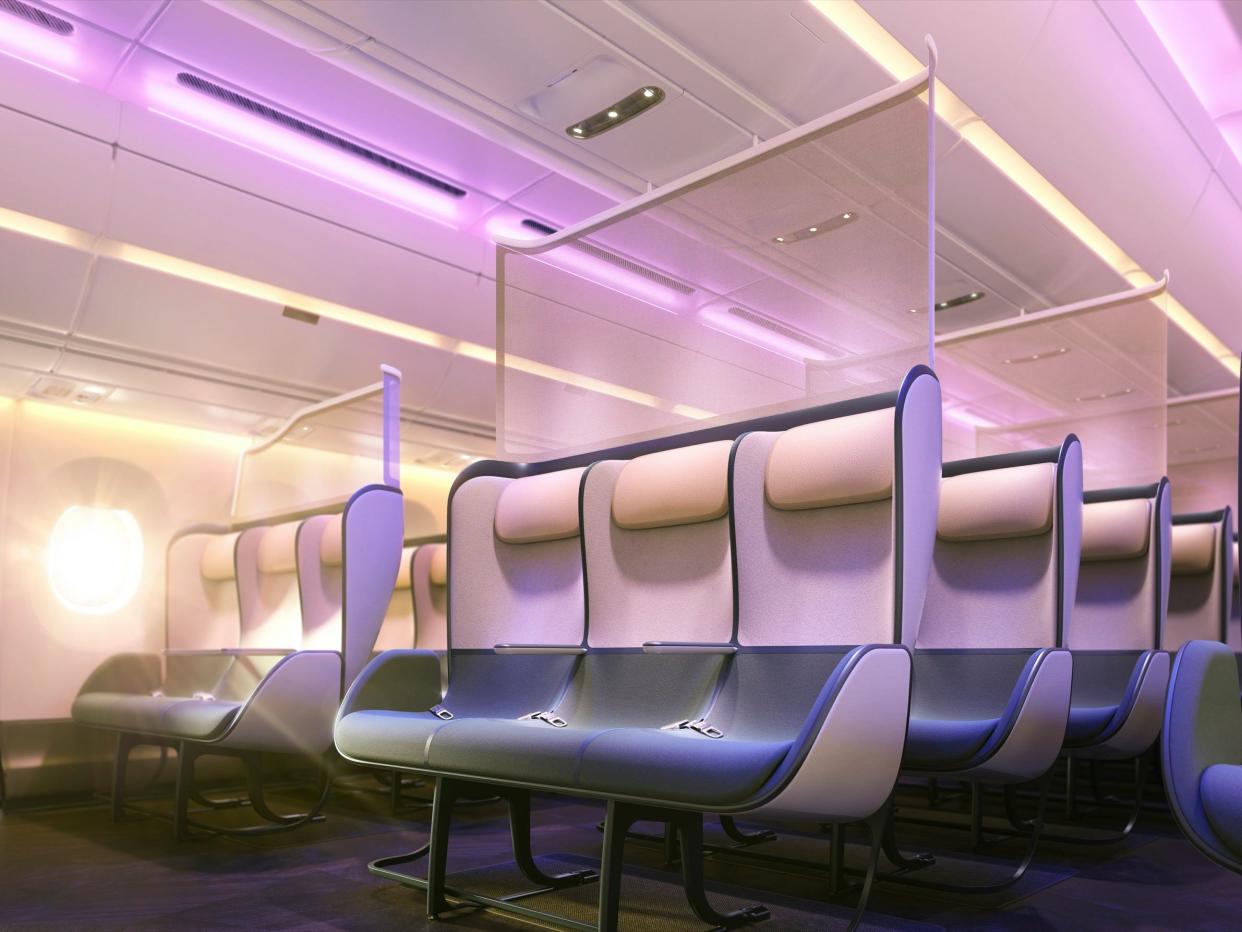
A rendering of PriestmanGoode's Pure Skies concept.
PriestmanGoode
World-famous design firm PriestmanGoode debuted its vision of what post-pandemic travel should look like with a next-level design that upends current notions of flying.
Business and economy classes would be renamed to rooms and zones, respectively, as the firm believes the current class names to be "outdated."
UVC and heat cleaning would be standard, in addition to existing aircraft cleaning practices, to further provide peace of mind to flyers.
Inventors have been tinkering with different ways of effecting social distancing on airplanes since the pandemic began with little real-world success but one firm is taking the idea to the next level.
With its latest design concept, London's PriestmanGoode wants to change everything we know about flying to ensure complete peace of mind for consumers while also bringing about reforms to the practice. The world-famous firm, which recently guided Greece's Aegean Airlines through a massive rebranding campaign, is trying its hand at public health in the skies with its new "Pure Skies" program with three motivating factors in mind: personal space, hygiene, and touch-free journeys.
Related: Flight attendants explain COVID-19 affected their jobs
Unlike those that came before it, implementing this design would upend the current notions of flying by removing the idea of different classes of service. What's currently known as business class seats would be referred to as Pure Skies Rooms and economy class seats would be Pure Skies Zones.
The seat designs themselves aren't overly radical – with other innovators suggesting never-before-used rear-facing seats within rows as a possible alternative – and builds upon existing themes while offering flexibility for all airlines, whether they be budget or full-service, to customize the finished product.
Take a look at what could be the future of travel in a post-pandemic world.
PriestmanGoode's Pure Skies design for aircraft seeks to use the current industry environment to upend current notions of flying while reforming it for – what it believes to be – the better.
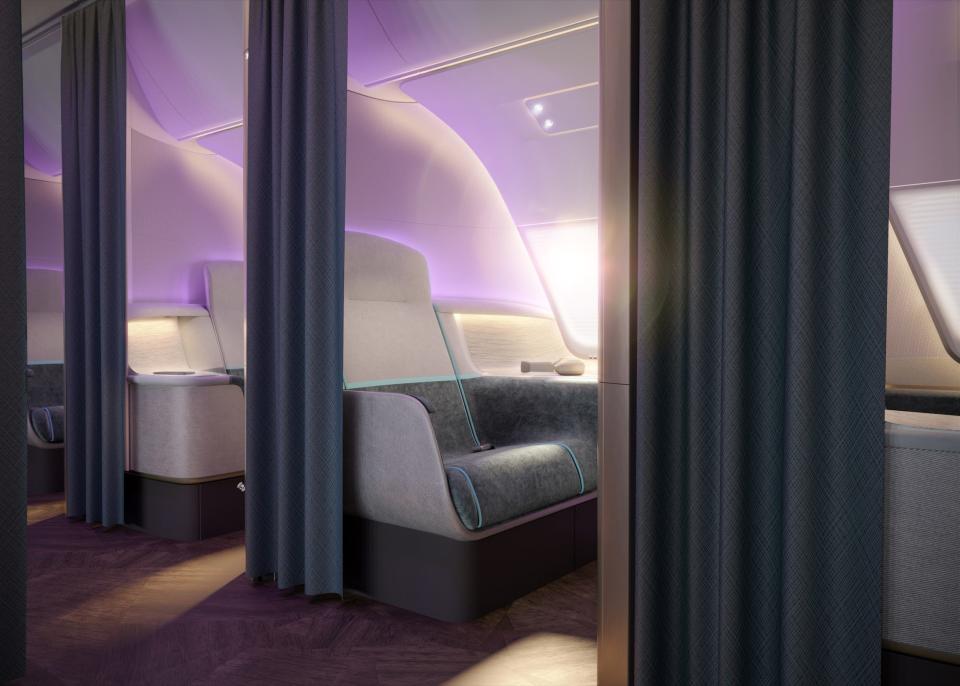
A rendering of PriestmanGoode's Pure Skies concept.
PriestmanGoode
Each cabin will be completely overhauled in name, appearance, and design.
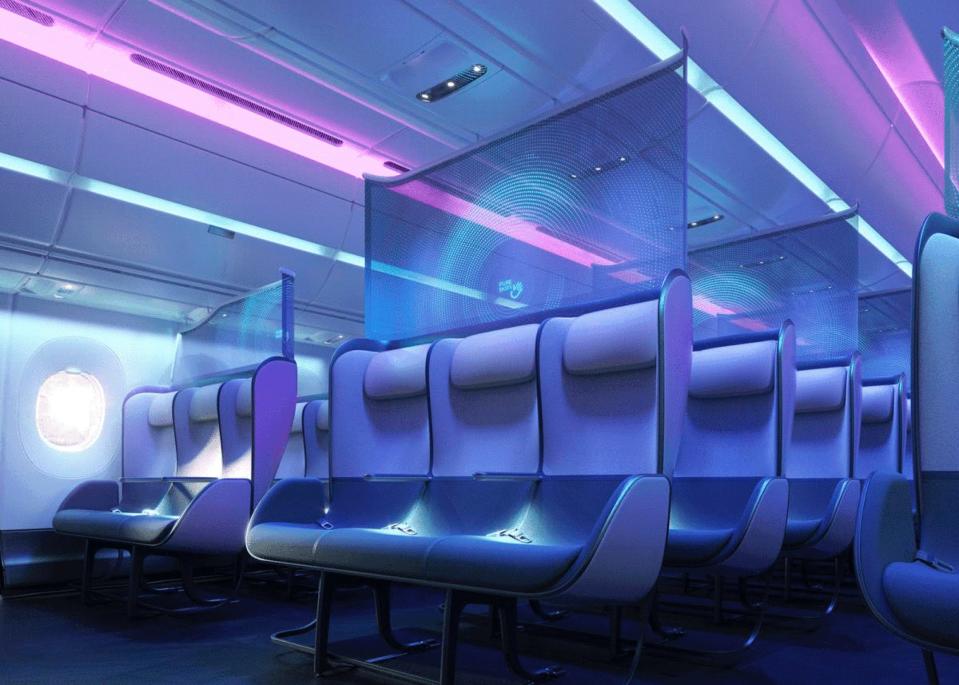
A rendering of PriestmanGoode's Pure Skies concept.
PriestmanGoode
The first overhaul asks the age-old question: What's in a name? Instead of the traditional economy and business classes – which the firm calls "outdated" – cabins will be divided between sections called "rooms" and "zones."
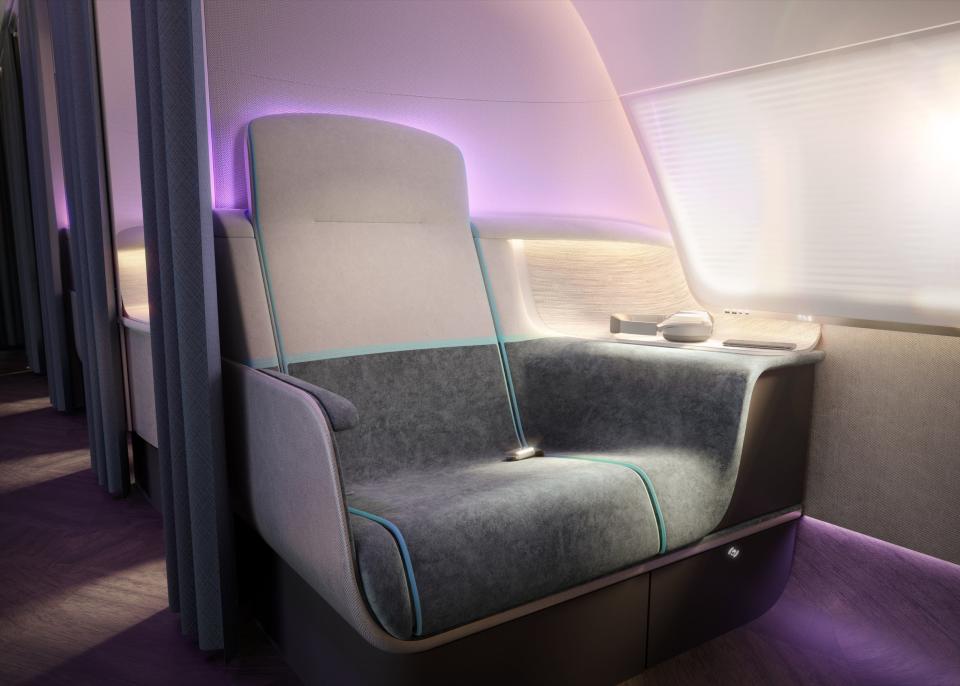
A rendering of PriestmanGoode's Pure Skies concept.
PriestmanGoode
Business-class seats would be known as rooms while economy seats would be zones.
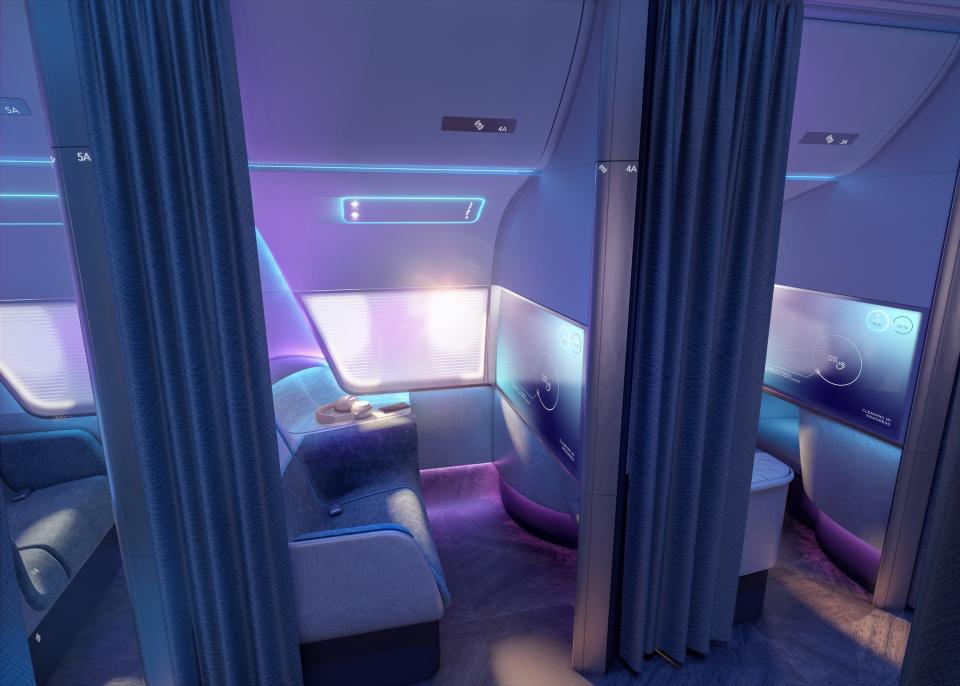
A rendering of PriestmanGoode's Pure Skies concept.
PriestmanGoode
Continuing with current industry trends that call for private suites in the forward cabin, rooms will be fully enclosed quarters with full floor to ceiling dividing walls.
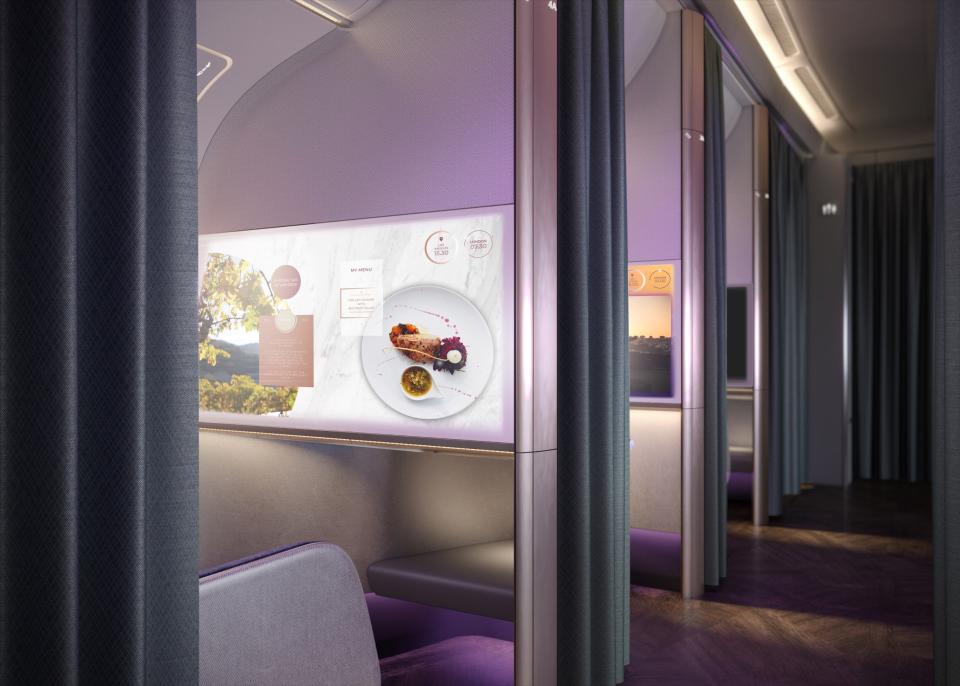
A rendering of PriestmanGoode's Pure Skies concept.
PriestmanGoode
Instead of enclosable suite doors – like those found on Qatar Airways' Qsuites and British Airways' Club Suite – this design also calls for floor-to-ceiling curtains to completely block off rooms from the aisle.
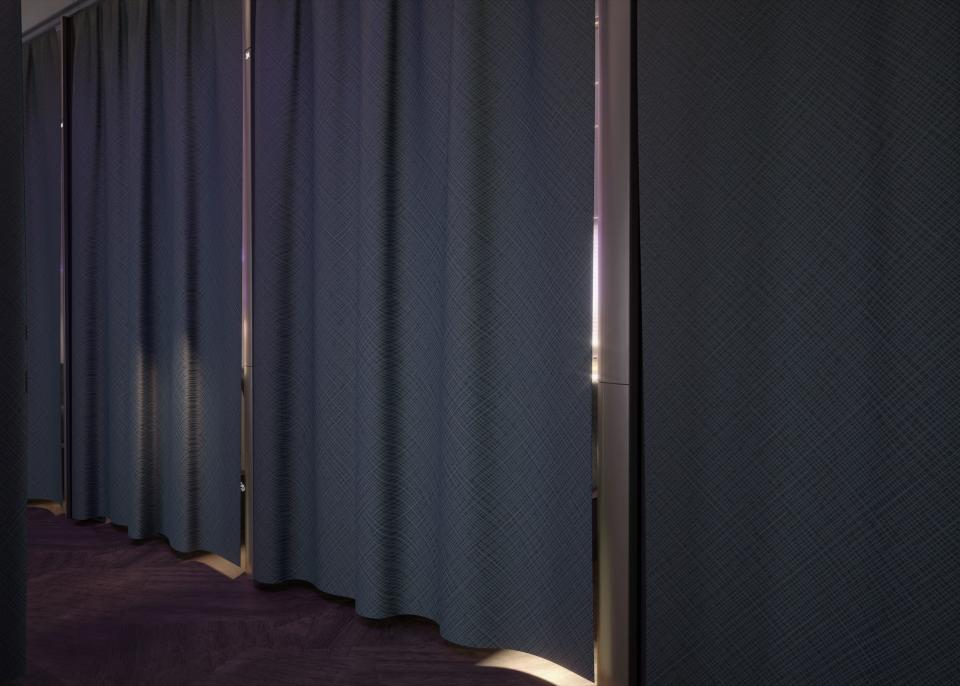
A rendering of PriestmanGoode's Pure Skies concept.
PriestmanGoode
Even overhead storage will be incorporated into the seat so that passengers truly don't need to leave the room unless to use the restroom.
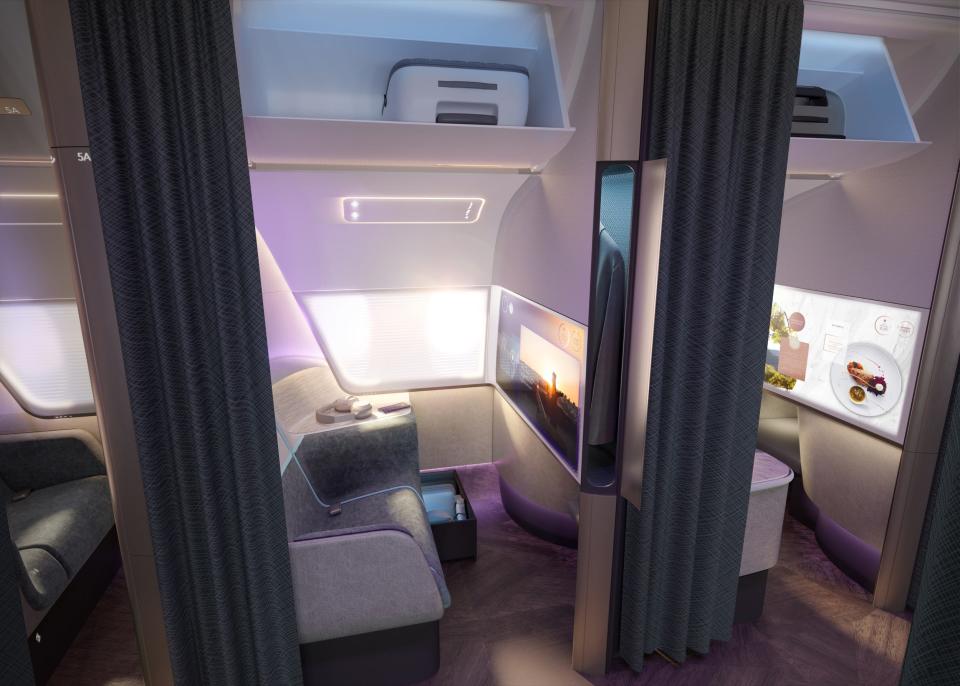
A rendering of PriestmanGoode's Pure Skies concept.
PriestmanGoode
Rooms would also have large amounts of personal storage space at the seat level.
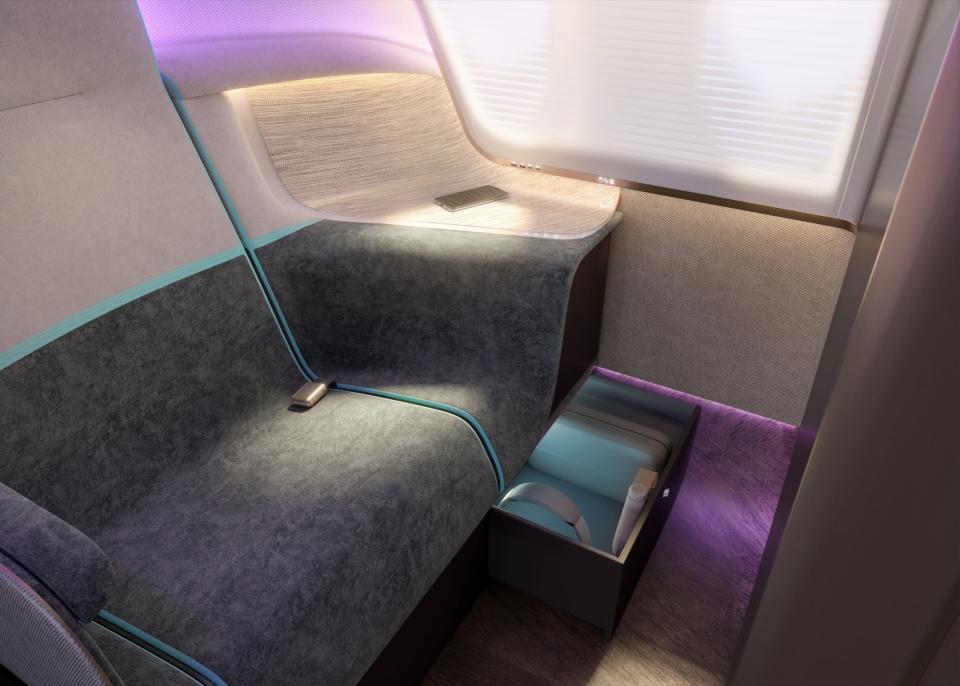
A rendering of PriestmanGoode's Pure Skies concept.
PriestmanGoode
Controlling the in-flight entertainment system in the design could be done via gestures and not by utilizing a remote or touchscreen, bringing down the number touchpoints even further.
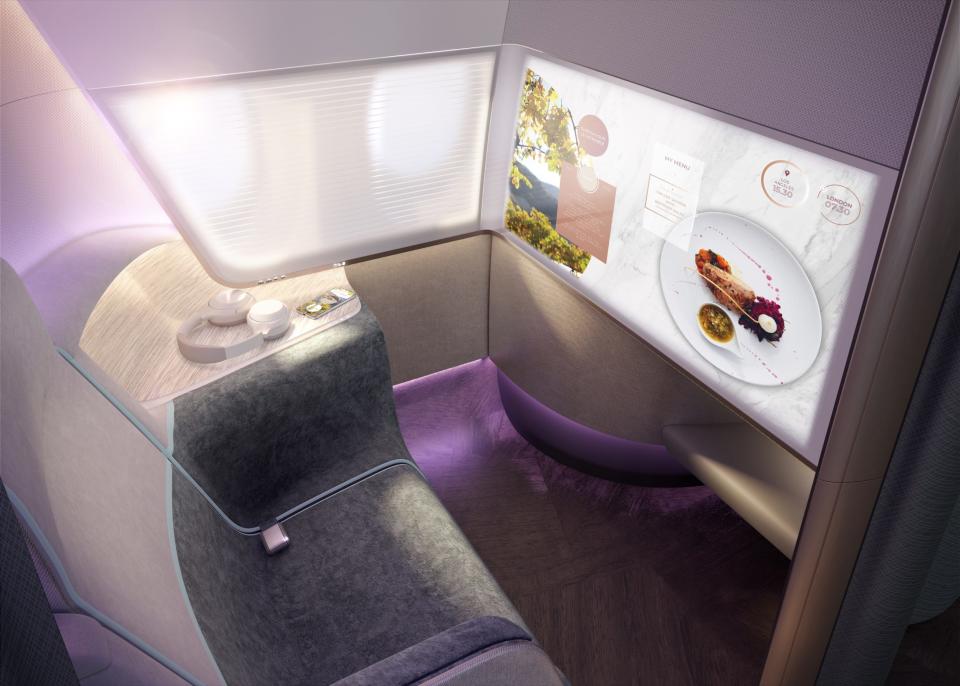
A rendering of PriestmanGoode's Pure Skies concept.
PriestmanGoode
And device-pairing technology would be expanded here so passengers could use their phones to control the system if they desired.
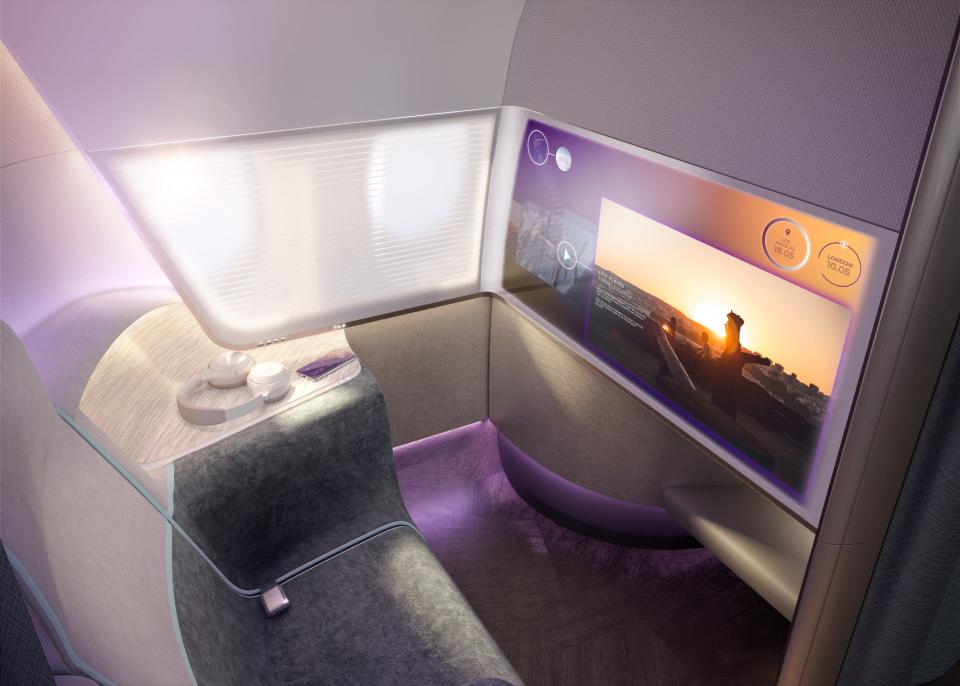
A rendering of PriestmanGoode's Pure Skies concept.
PriestmanGoode
The design shuns split lines, which the design firms says will leave fewer nooks and crannies where the virus can hide during cleaning.
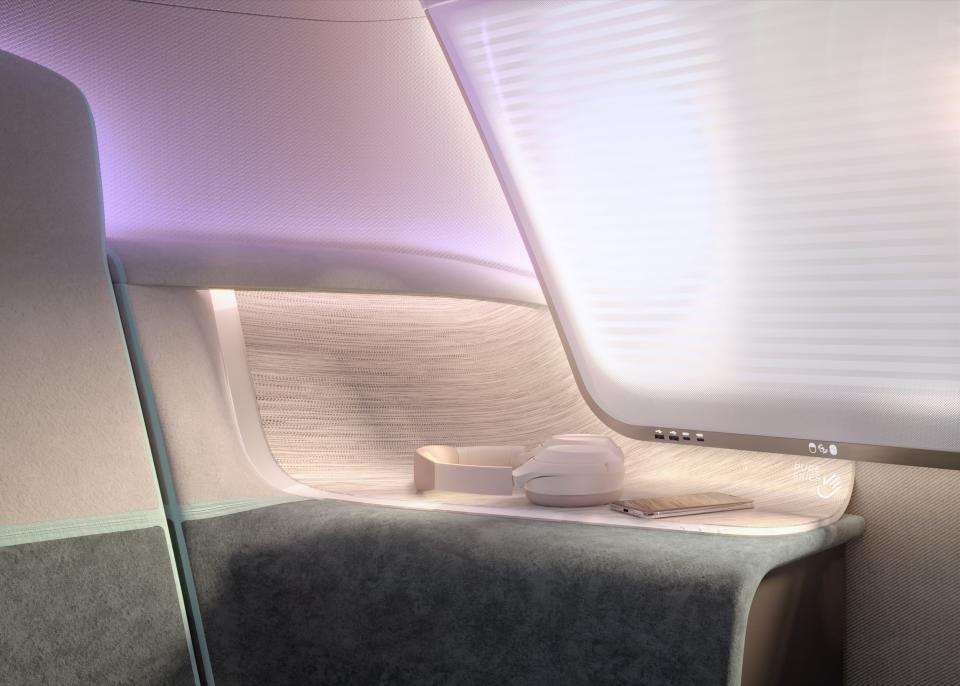
A rendering of PriestmanGoode's Pure Skies concept.
PriestmanGoode
Light and colors play a key role, with different colors signifying whether the aircraft is clean or hasn't been cleaned yet.
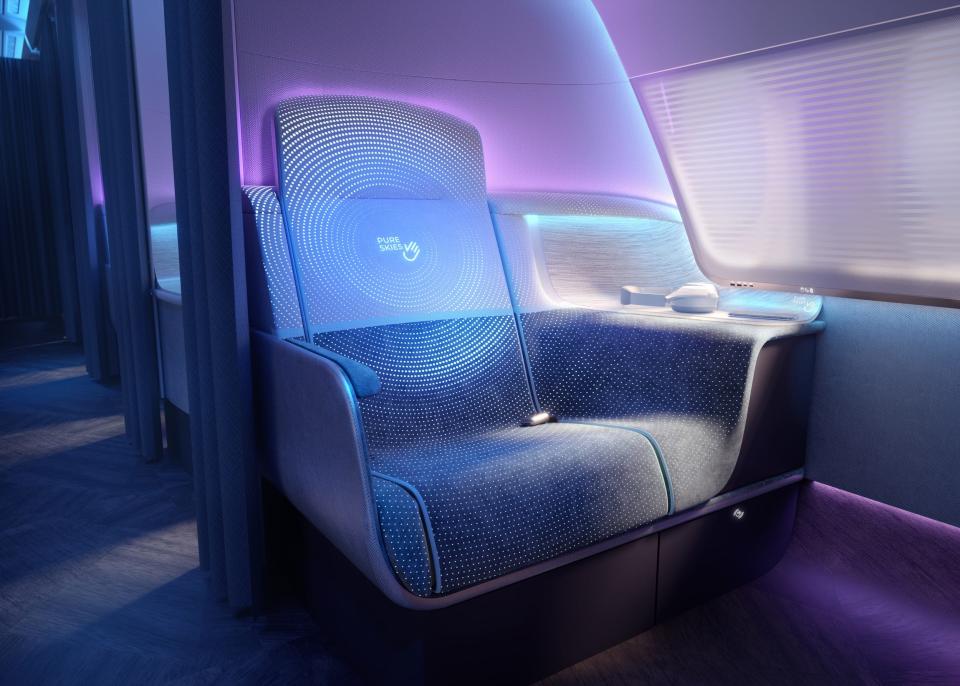
A rendering of PriestmanGoode's Pure Skies concept.
PriestmanGoode
Once cleaning is complete, peach and yellow colors welcome passengers on board with the peace of mind that the aircraft is clean.
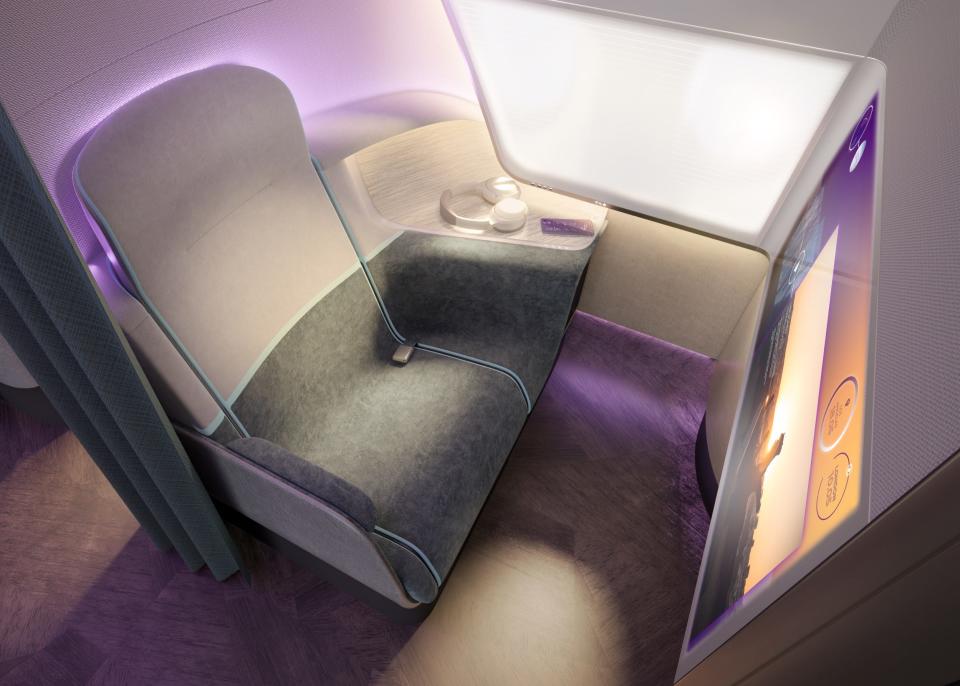
A rendering of PriestmanGoode's Pure Skies concept.
PriestmanGoode
Airlines are currently adopting new cleaning measures for aircraft but most passengers don't see it in action. PriestmanGoode believes reassurance using the colors will be key.
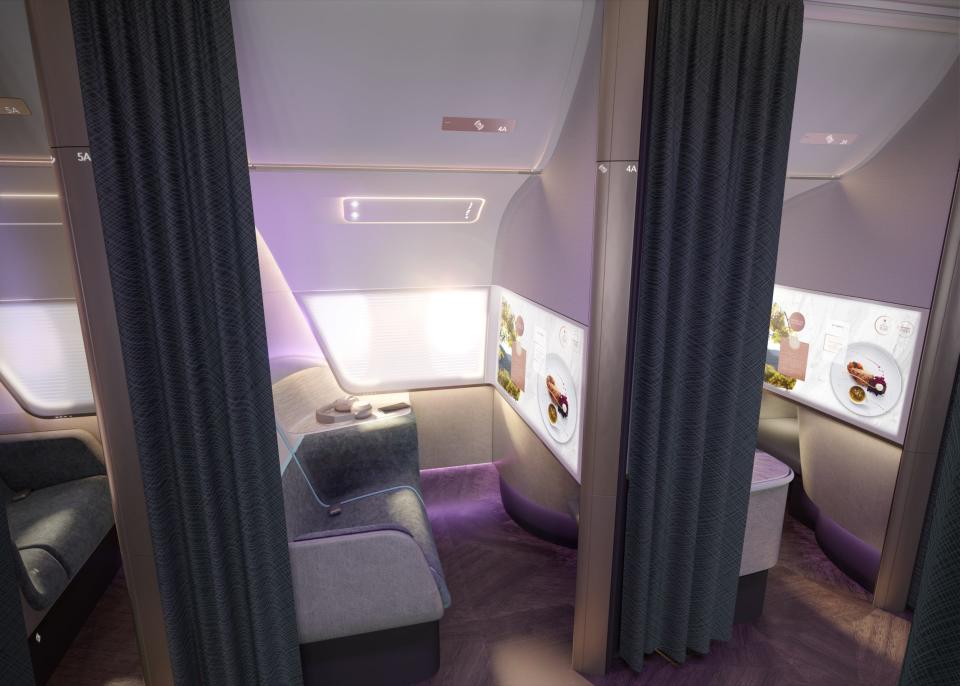
A rendering of PriestmanGoode's Pure Skies concept.
PriestmanGoode
Economy would also be getting an upgrade with solid shells housing the seats in each row.
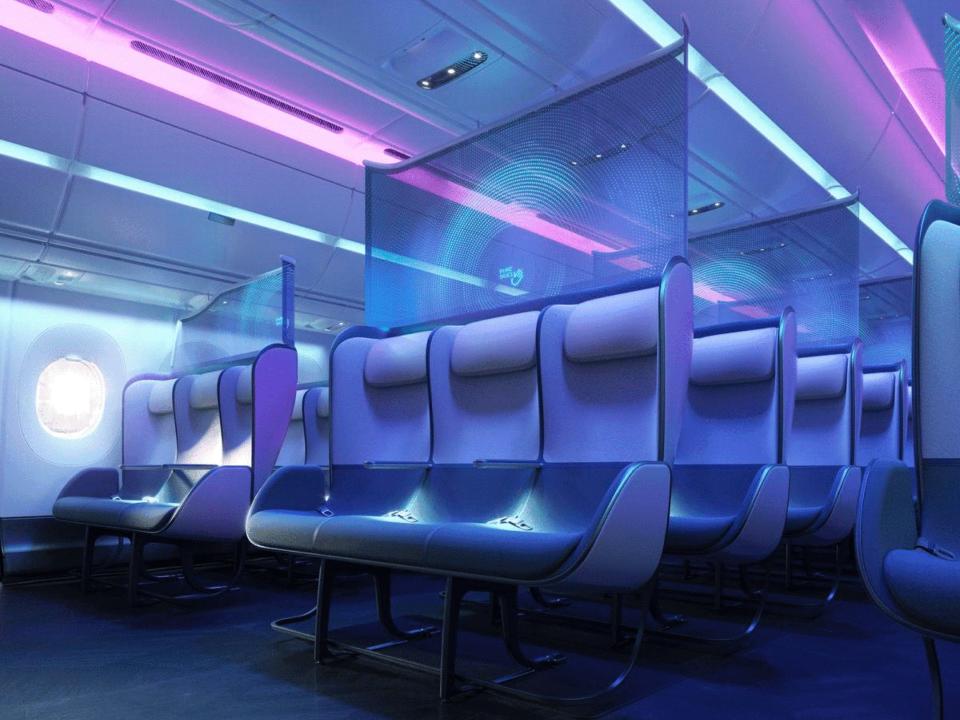
A rendering of PriestmanGoode's Pure Skies concept.
PriestmanGoode
Each row would be a single unit that doesn't affect any of the other rows, meaning passengers can recline to their heart's desire with no fear of retaliation.
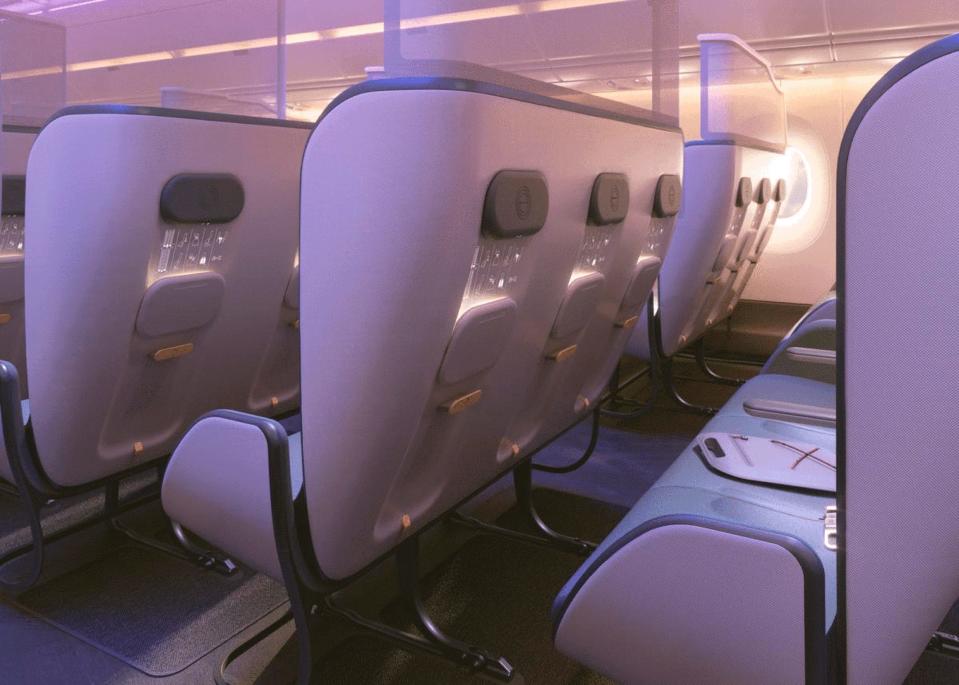
A rendering of PriestmanGoode's Pure Skies concept.
PriestmanGoode
The back of the shells would be customizable to the airline's preference but assumes the removal of in-flight entertainment systems in favor of personal device usage that can be attached to device holders.
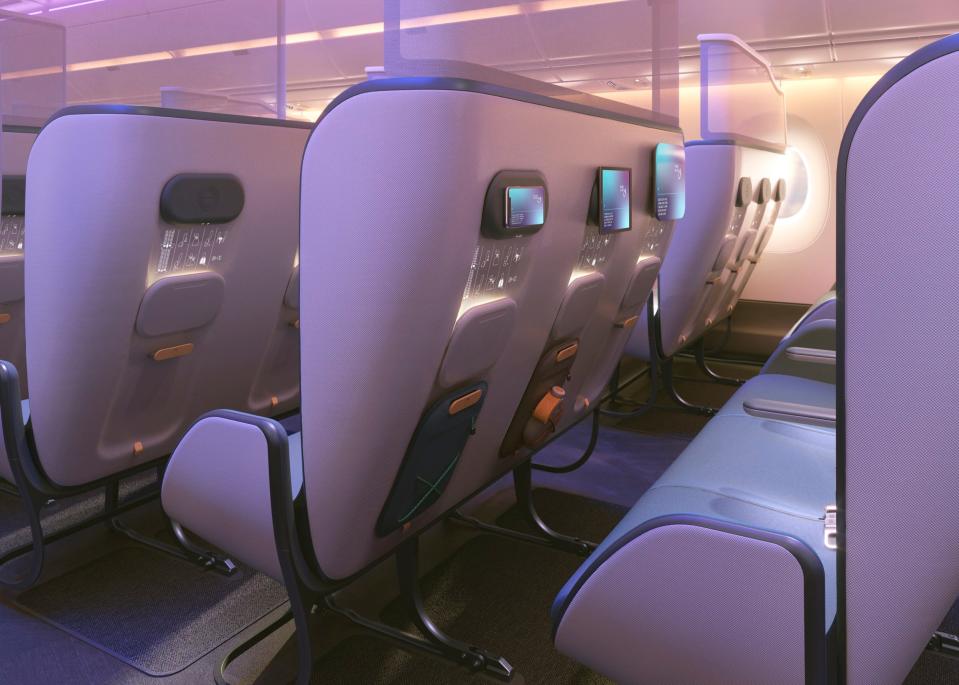
A rendering of PriestmanGoode's Pure Skies concept.
PriestmanGoode
Dividers would be erected between each seat to provide an additional modicum of protection and privacy for adjacent flyers.
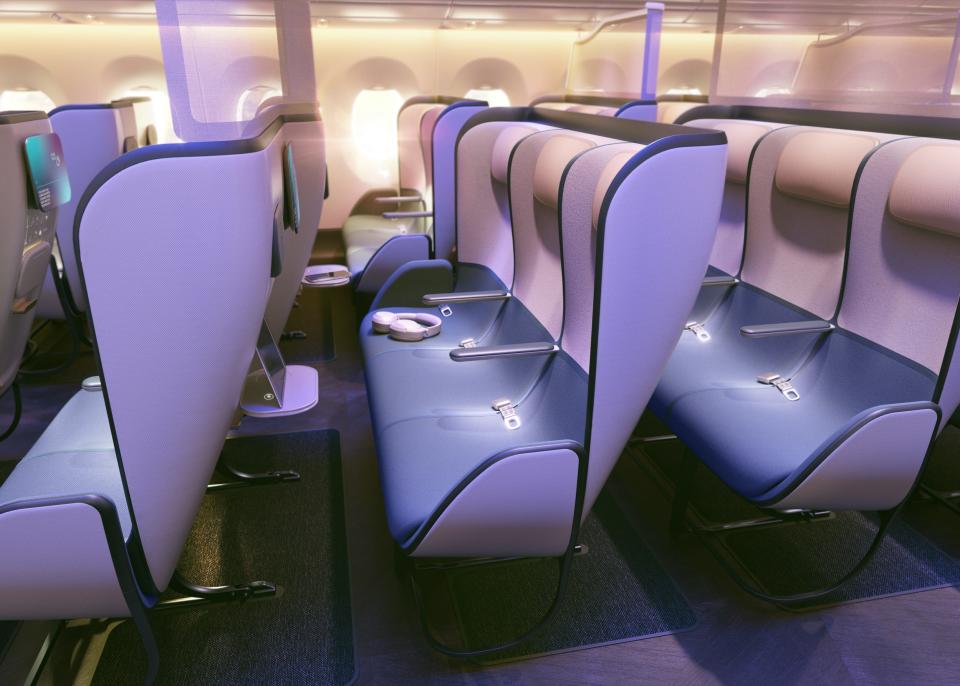
A rendering of PriestmanGoode's Pure Skies concept.
PriestmanGoode
Enterprising airlines can also use the opportunity to sell devices pre-loaded with content to be used for the flight.
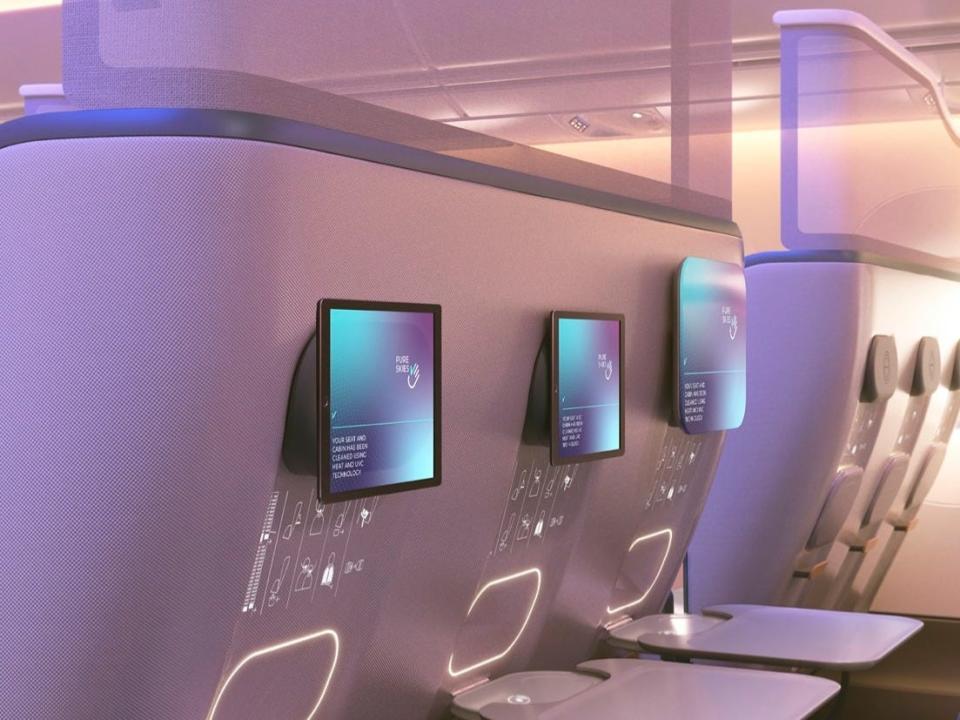
A rendering of PriestmanGoode's Pure Skies concept.
PriestmanGoode
The tray table may be a thing of the past in the PriestmanGoode design.
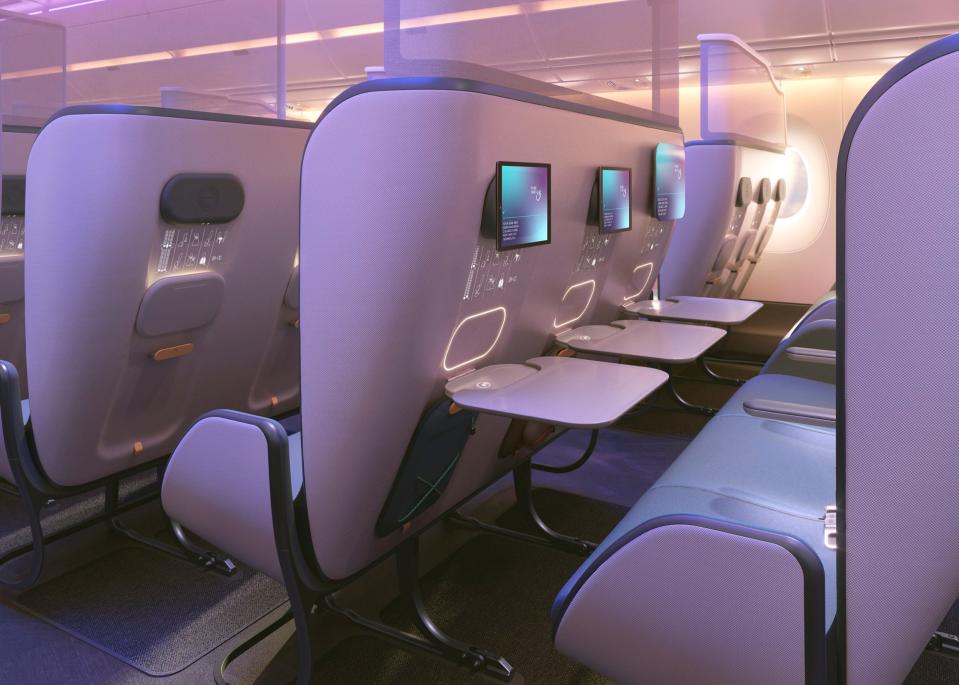
A rendering of PriestmanGoode's Pure Skies concept.
PriestmanGoode
Each seat would have a small table that comes standard.
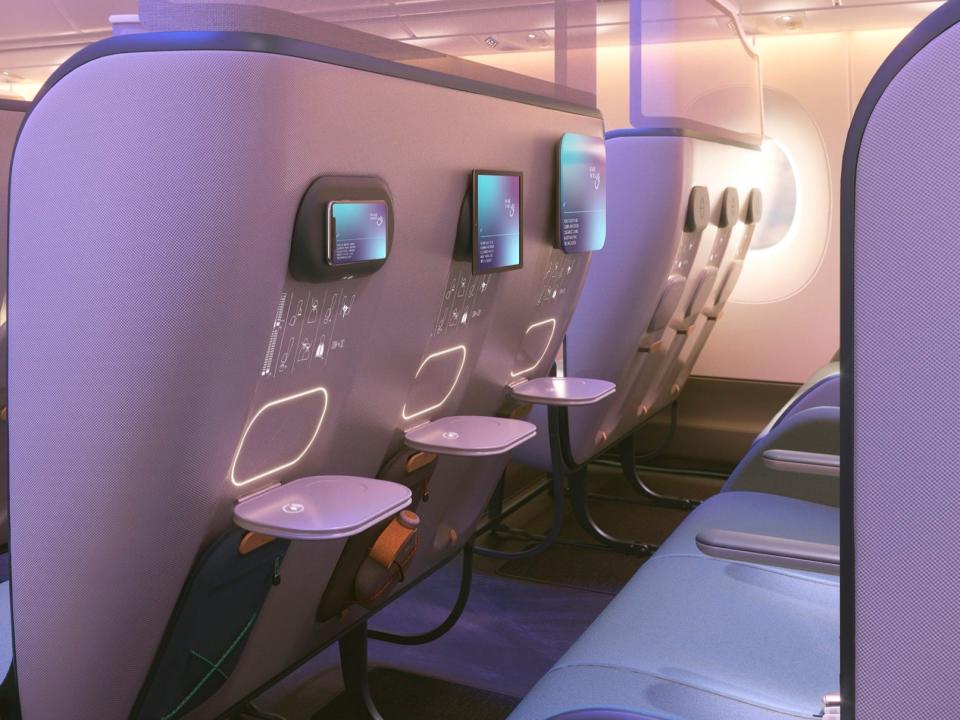
A rendering of PriestmanGoode's Pure Skies concept.
PriestmanGoode
Half the size of the current tray tables. these would only be suitable for holding a drink or small snack.
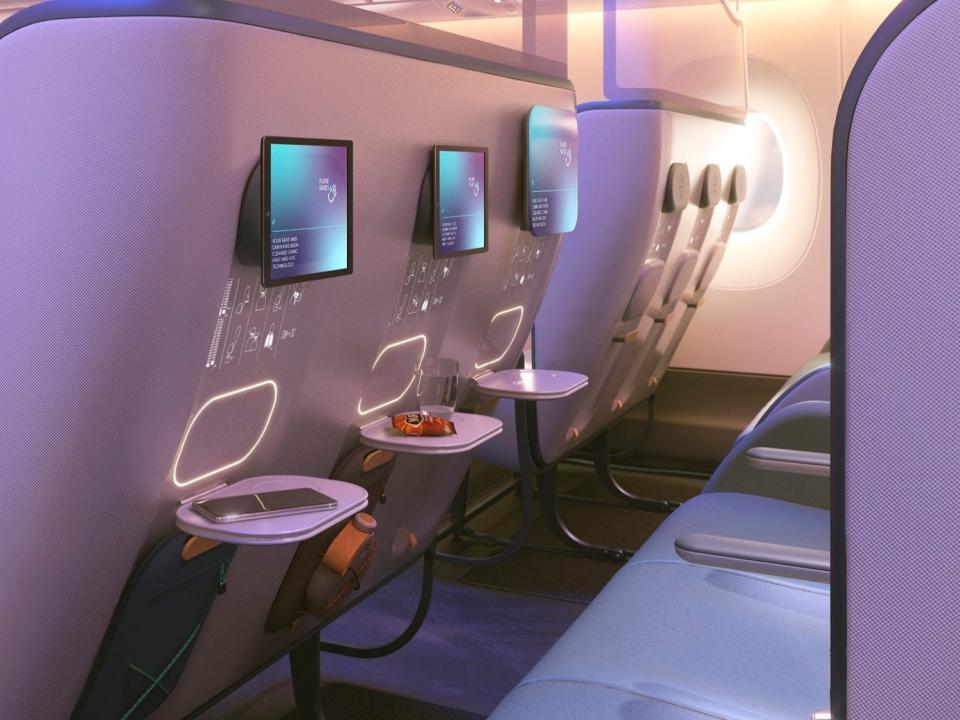
A rendering of PriestmanGoode's Pure Skies concept.
PriestmanGoode
Flight attendants would then distribute a larger attachment to be used during meal times.
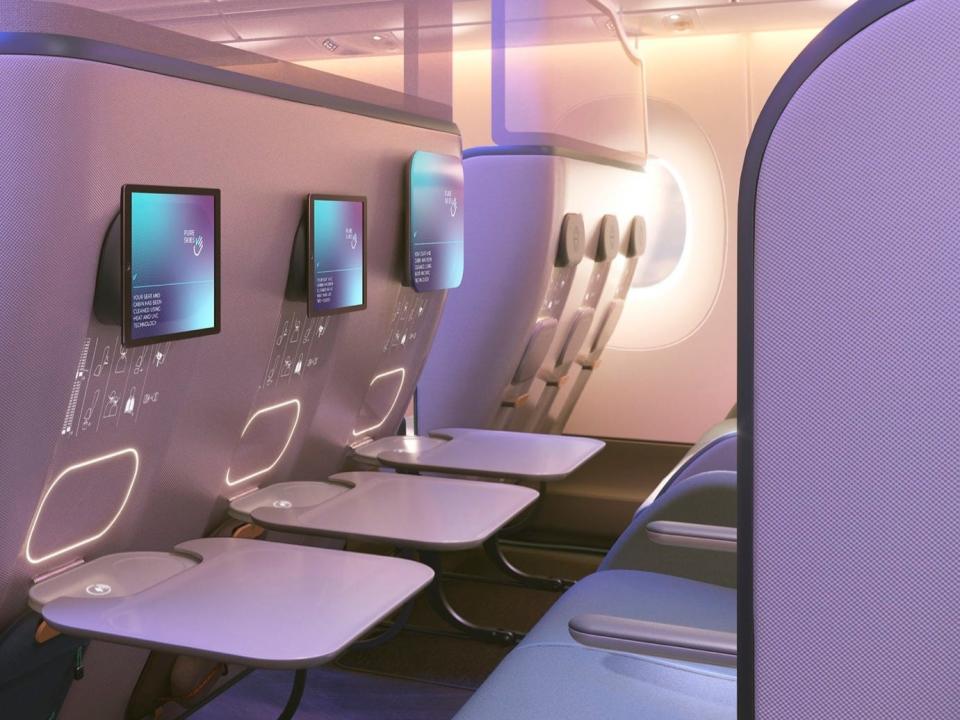
A rendering of PriestmanGoode's Pure Skies concept.
PriestmanGoode
The detachable tables could then be cleaned more thoroughly and replaced as needed to further ensure peace of mind during mealtimes.
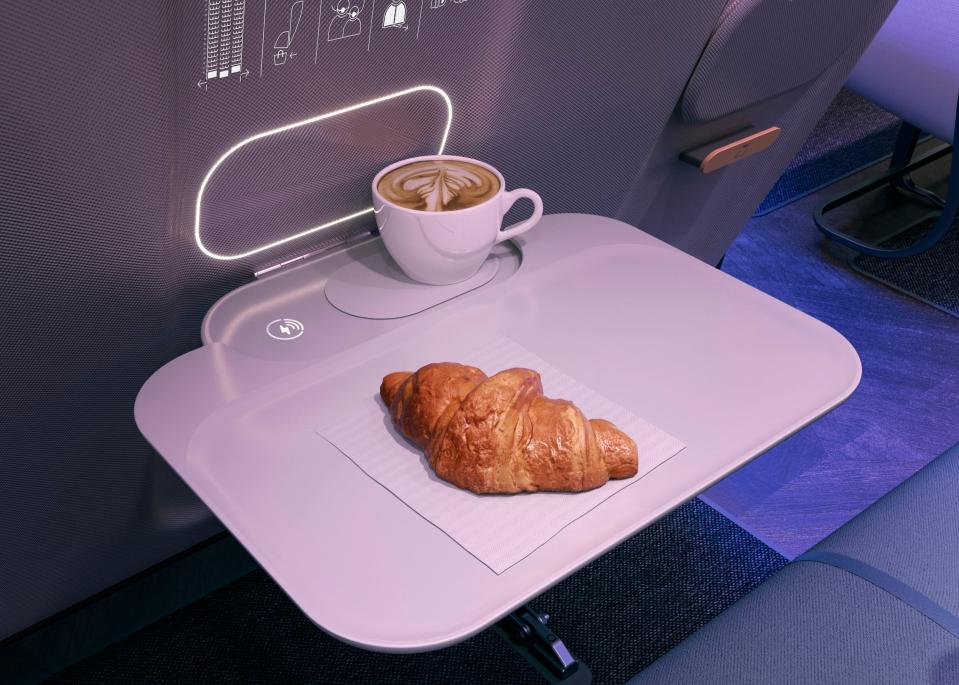
A rendering of PriestmanGoode's Pure Skies concept.
PriestmanGoode
And instead of literature pockets, passengers would be given removable bags that attach to the seat-back...
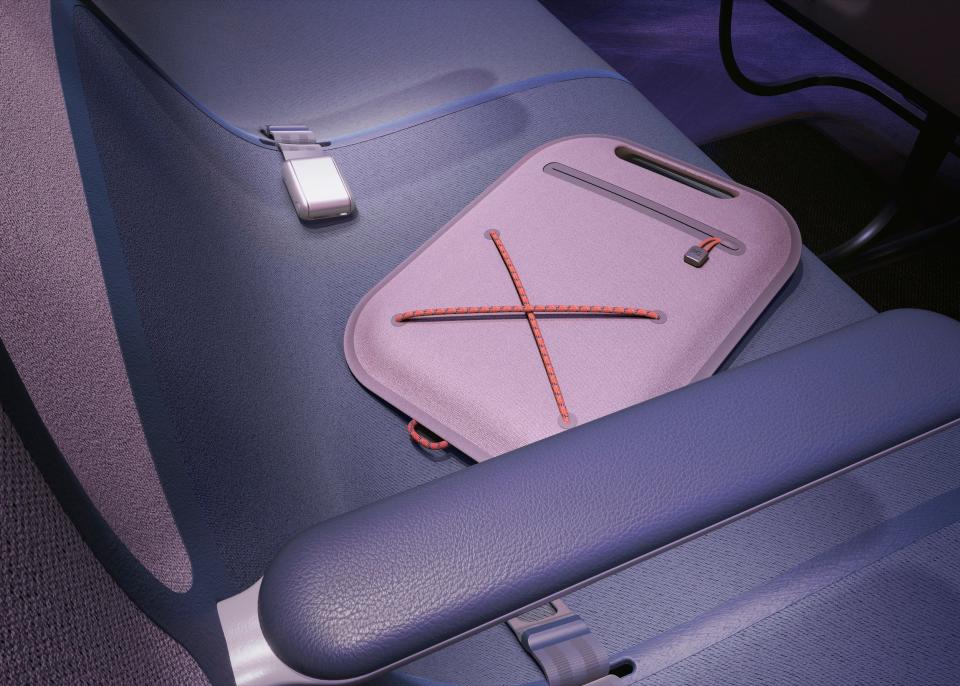
A rendering of PriestmanGoode's Pure Skies concept.
PriestmanGoode
Or simply use their own bag.
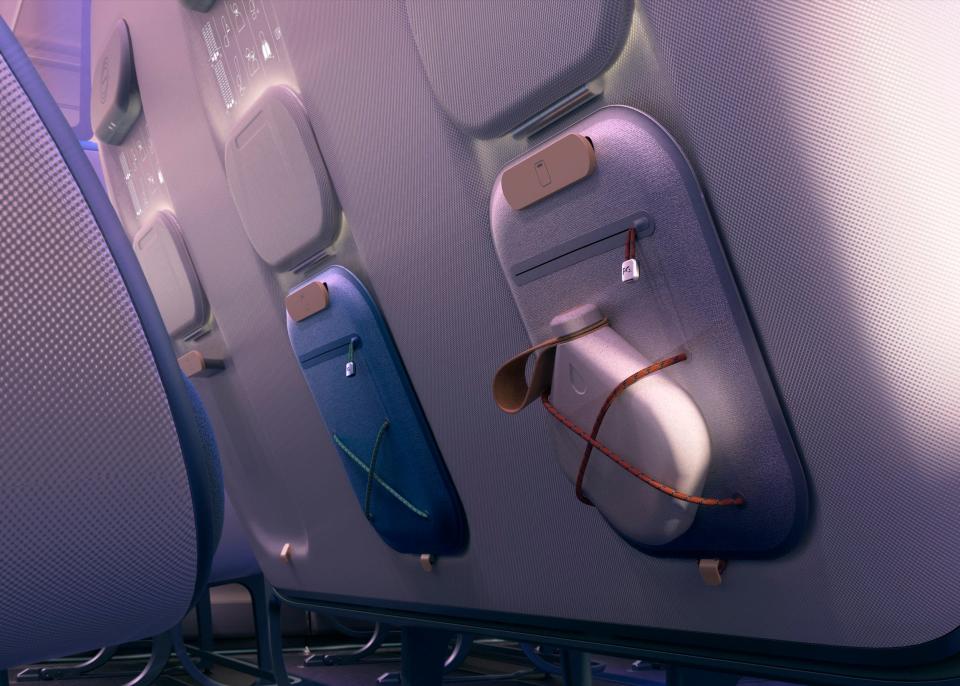
A rendering of PriestmanGoode's Pure Skies concept.
PriestmanGoode
Multiple cleaning methods would be employed including UVC lights and heat cleaning, in addition to existing airline processes like fogging.
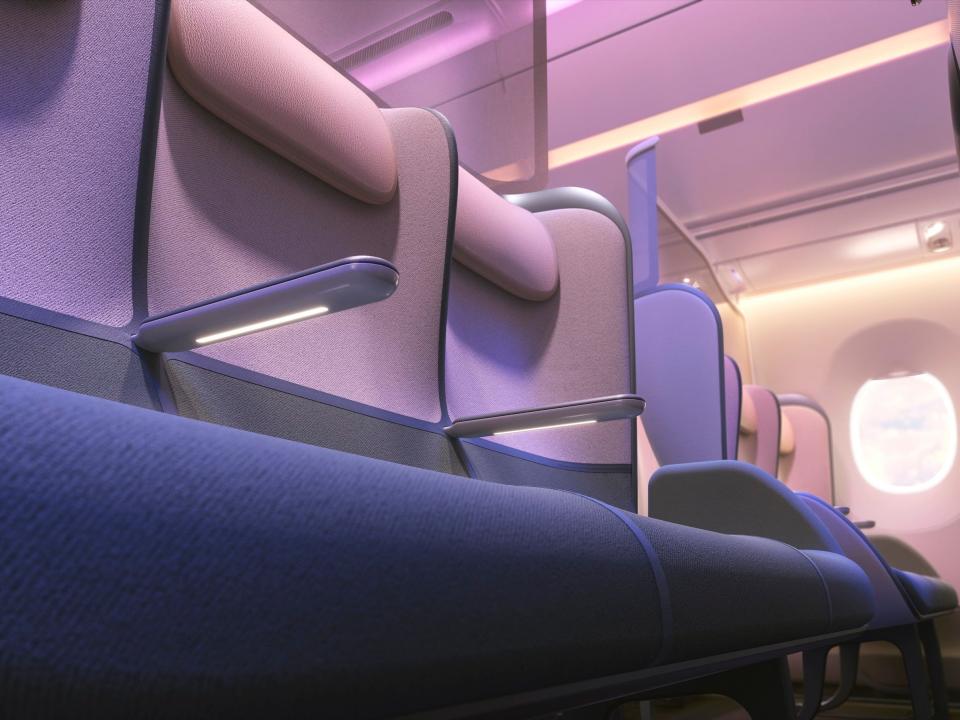
A rendering of PriestmanGoode's Pure Skies concept.
PriestmanGoode
And just like in the premium section, different colors would be used to indicate the cleaning stages of the cabin.
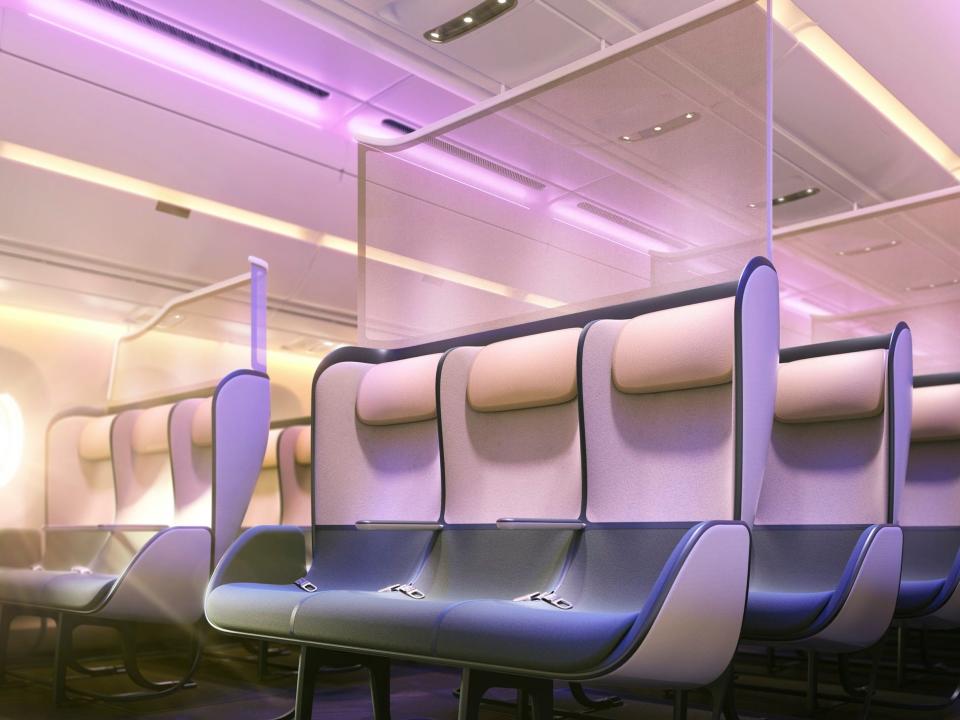
A rendering of PriestmanGoode's Pure Skies concept.
PriestmanGoode
The zones – formerly known as economy class seats – would be staggered as to create an allusion of privacy and distancing even though all passengers in a given row will be within six feet of each other.
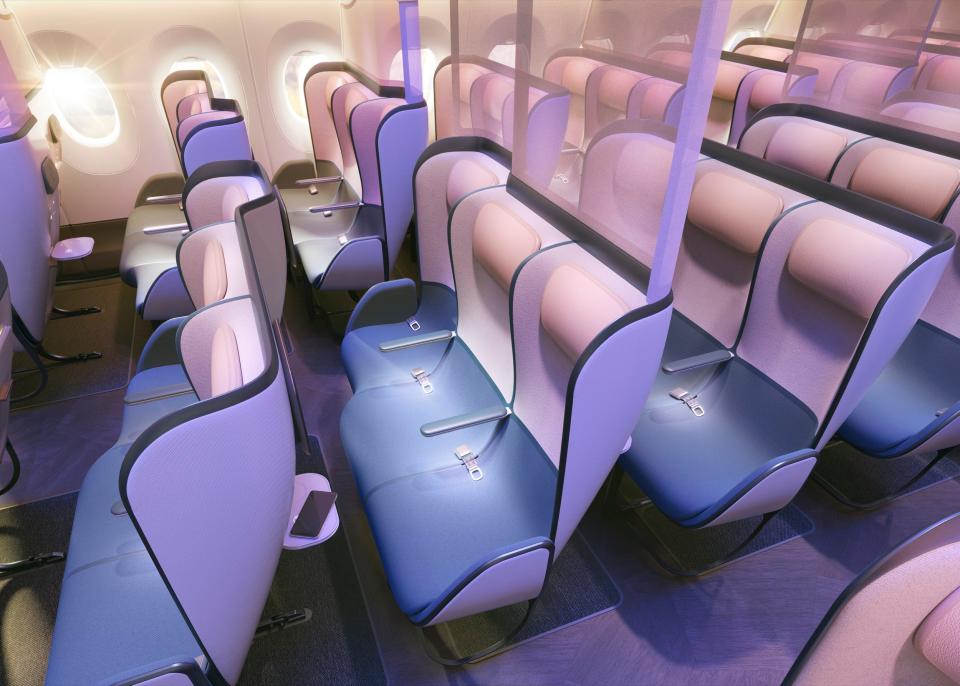
A rendering of PriestmanGoode's Pure Skies concept.
PriestmanGoode
With most industry experts in agreement that pre-pandemic travel numbers will not return in 2020 – and likely beyond – PriestmanGoode believes might be the time for airlines to start making this radical shift since design and implementation could take three years or more.
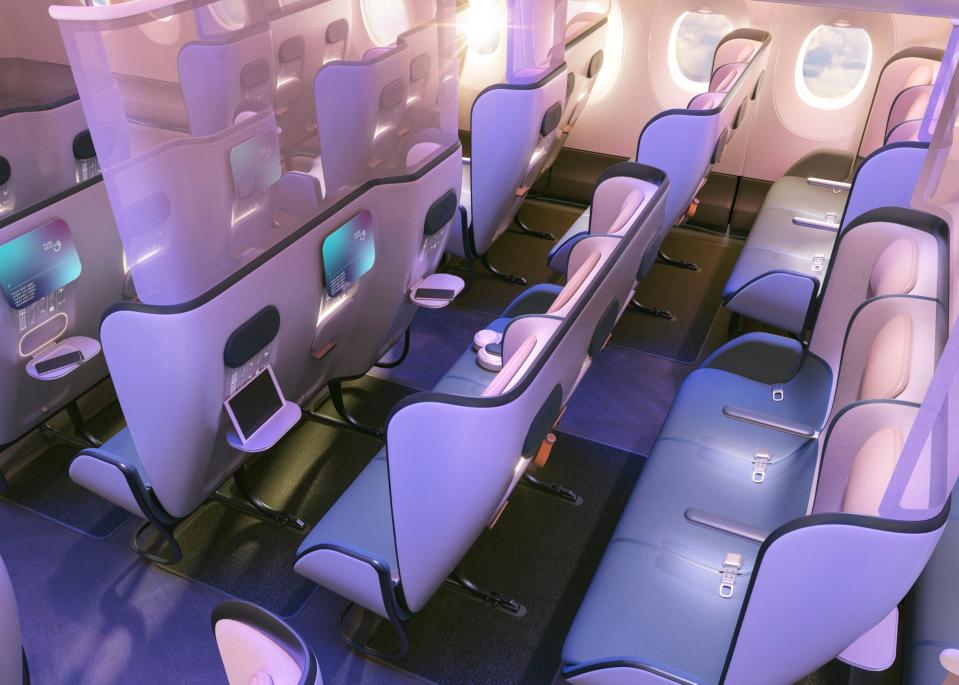
A rendering of PriestmanGoode's Pure Skies concept.
PriestmanGoode
Read the original article on Business Insider

